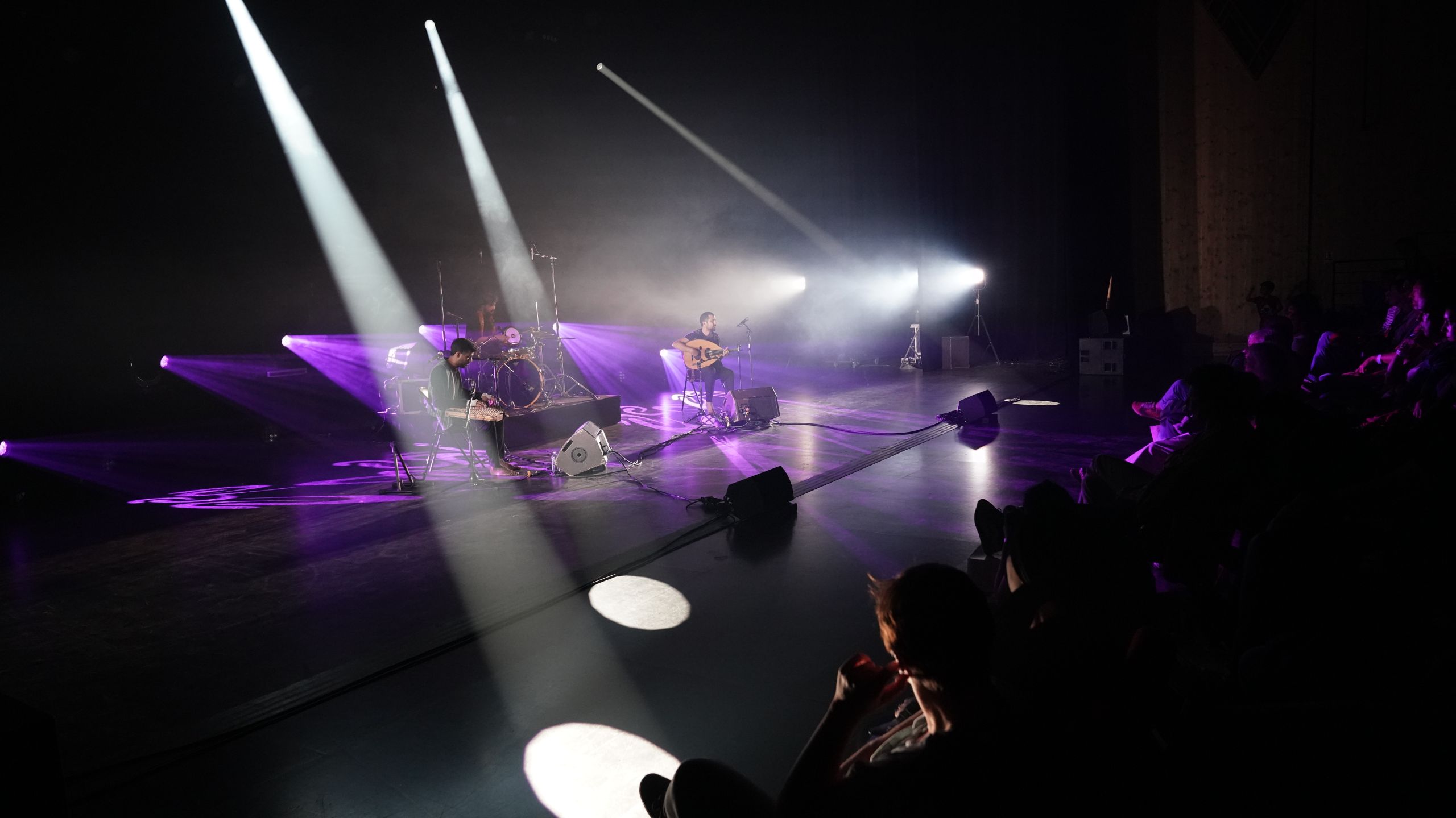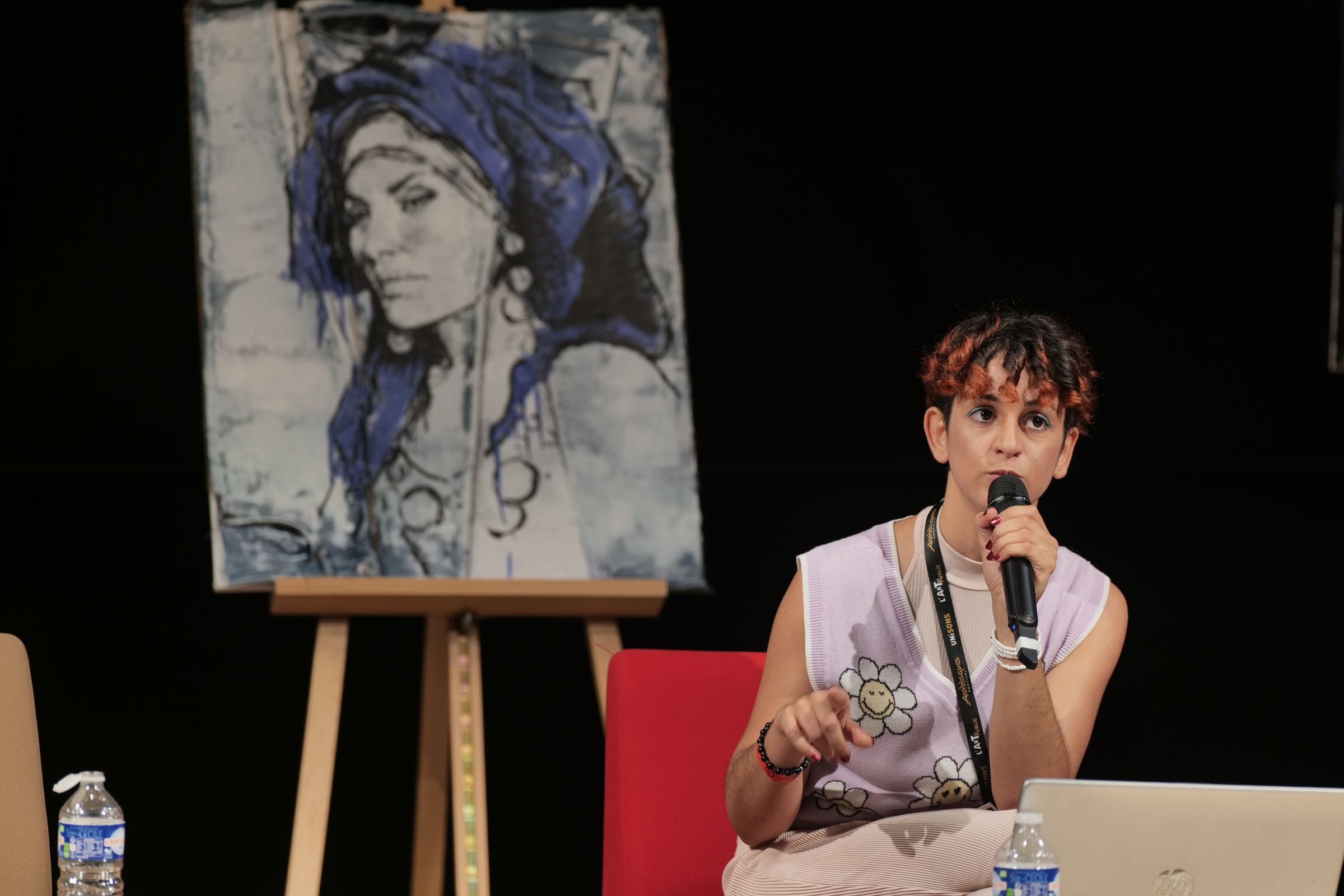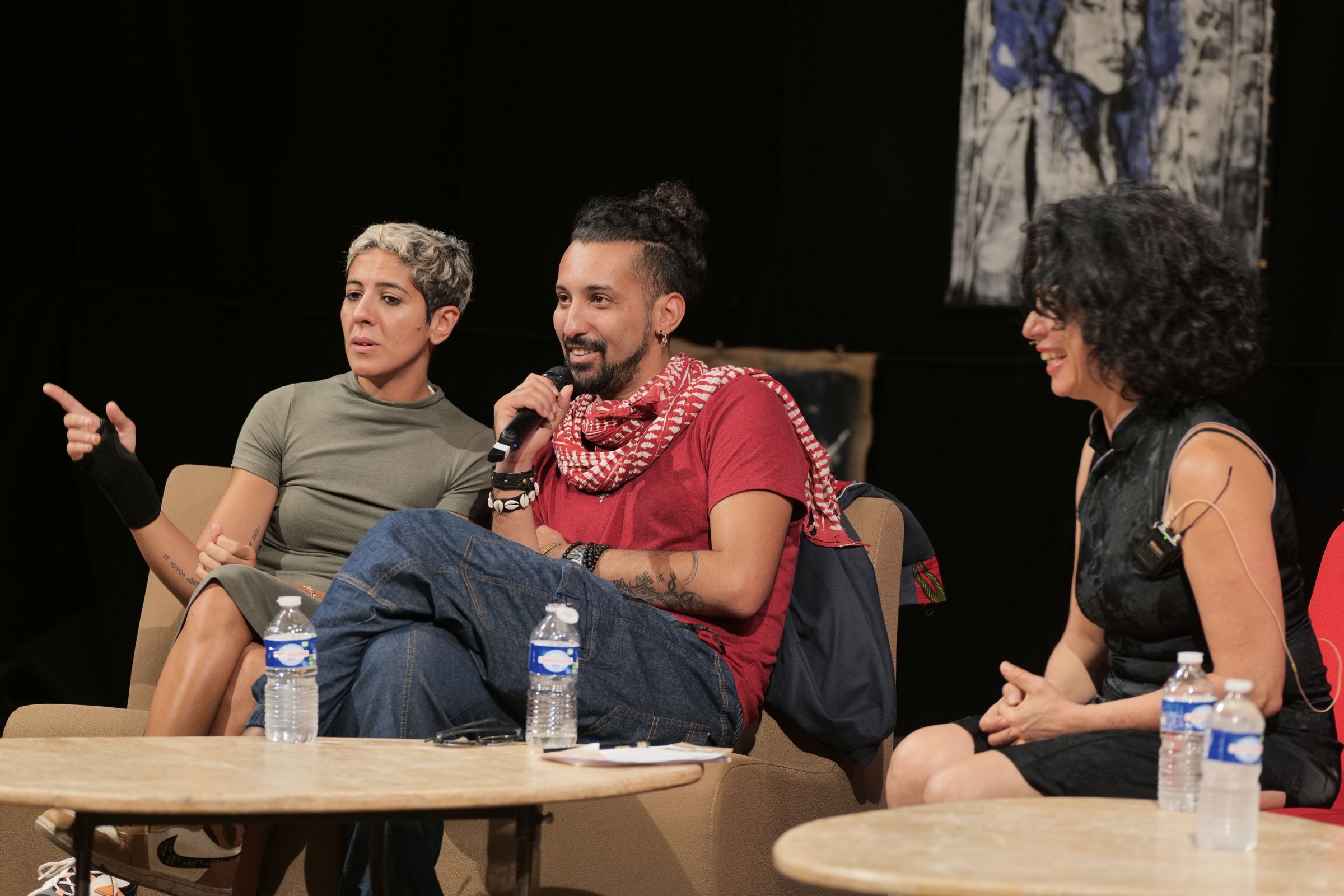Words by Weronika Murek for ARTeria Foundation
Photos by Volodymyr Pavelko
Montpellier has no coastline, although it gives the impression of a city that leans towards the sea, in much the same way that Barcelona and Marseille orient themselves. Apart from this detail, everything about Montpellier is right: the slope of the streets, which rise and fall in gentle tangles, churches with light-coloured walls lit up by the strong Mediterranean sun, the sweet smell of cannabis. This city belongs to the students – according to statistics, they make up a third of the total population. It’s easy to believe this, as the streets of the centre are crowded even after dark, having gardens in front of restaurants is just a signal to look further afield, not to go home.
In the face of this vitality, the suburbs of Montpellier retain the right due to all suburbs in the world. They are quiet and seem almost colourless. They resemble the dormitory neighbourhoods of US cities. The estates are flat. There are no shops or bars. Buses appear rarely and it is difficult to imagine life here without a car. Those you meet here seem unaffected by the movements and shifts of modern urban life. They have been born here and stayed in the same place.
In the strip that separates the suburbs from the first, more densely populated part of the city is the park around the Château d’Ô. Its greenery is thin, the paths trodden, the trees slender, though not tall, without coming into any conflict with the sky. In between, there is an amphitheatre, a theatre and several box-shaped buildings. An ideal place to rest between noon and two o’clock.
This is where the Arabesque festival of Arab culture takes place.
It has been organised since 2006 by the Uni’Sons Foundation, which is primarily concerned with integration through the promotion of culture. The evocation of its differences and common parts is intended to give a sense of belonging and an awareness of the complexity of the mosaic of modern European societies. For those with an immigrant background, it is also an opportunity to meet within the community which they have formed as minorities. For many, it is an opportunity to feel less alien and alone.
Ayser Salman, author of The Wrong End of the Table: A Mostly Comic Memoir of a Muslim Arab American Woman Just Trying to Fit in, writes about a similar experience.
‘Do you know,’ she asks, ‘that feeling you get when you find yourself at the wrong end of the table at some party? You have the feeling that all the most interesting conversations are taking place out of your earshot. You try desperately to add a few words to contribute to the discussion, but you are too far away for anyone to hear you. They call it FOMO these days. The fear of all that we are missing out on. But you know what? For me, it’s not a story about FOMO. For me, it’s a story about LAAI – Life as an Immigrant. The life of an immigrant”.
Most of the events start in the afternoon, but the festival space fills up in the mornings too, with trips from local primary schools and colleges, families gathering after two o’clock, groups of amused friends in the evenings. You can buy books, maamoules – pastries stuffed with a paste of nuts and dates – you can buy mirrors, woollen slippers with elongated toes, leather and faux leather bags. In front of one stall, a man teaches calligraphy. At another, someone talks about the history of Palestine. There is the smell of sandalwood in the air. But everyone is looking forward to the concerts and panel discussions that take place in tents and under the open sky.
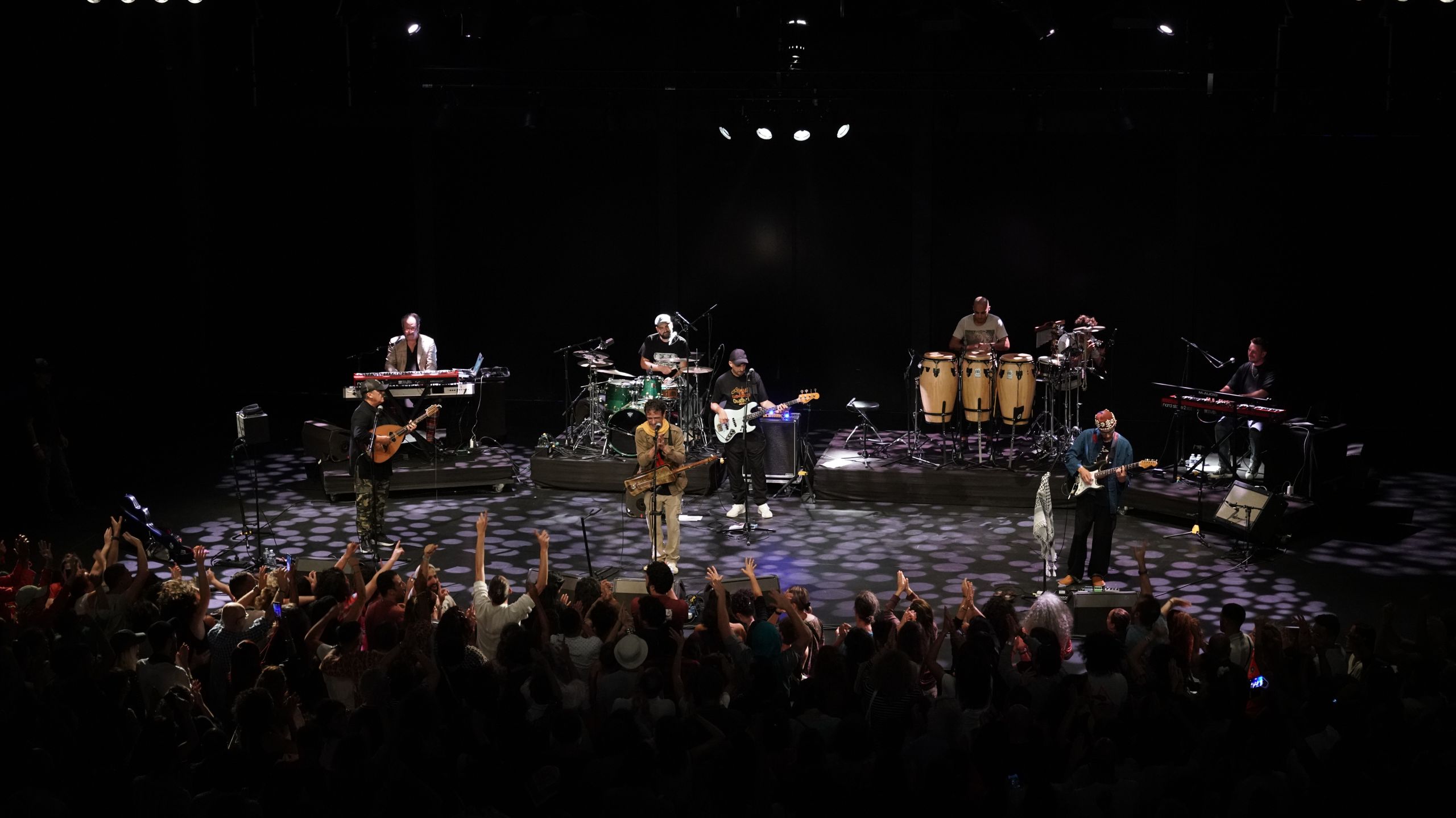
Gnawa and trans
Because after dark, gnawa rules.
The origins of this tradition are believed to date back to the days of slavery, and the name comes from words meaning ‘black man’ in the Berber language. Trade caravans – those selling gold and people – drawn north from all over Africa, criss-cross Morocco. Those who are sold retain a longing for their place of origin and the memory of instruments used to make music with family or friends. Now their hands are empty, worn down from drudgery and work, but their fingers can still tap out the right rhythm, they still long for the touch of wood and the vibration into which the strings are struck.
This practice of forced assimilation and the longing associated with it lasts for centuries. The captives embrace Islam but retain the memory of traditional West African rituals. Their rituals and music are what grow at the intersection of the heritage of Sufism – the mystical current of Islam – and African beliefs.
The symbol of the gnawa is – among other things – an instrument called a guembri or sintri.
Devotees of the gnawa believe that it is one of those instruments that appeared in man’s hands not as a result of his ingenuity or need, but as a direct gift from God. It has an elongated body, while its neck resembles a calabash. It can be played on its three strings, which produce a vibrating, metallic sound reminiscent of that produced by electric crickets. For the gnawa is more than just music: it is a vehicle, an instrument designed to put you in a trance and thus bring you closer to the jinn and the ancestors.
Gnawa performers are sometimes also its devotees. Those who believe in the healing power of the music, but also in the rituals that accompany it. In the past, everything started with an animal sacrifice; now the opening is the ceremonies for blessing the space. This is more than a concert. It’s actually a liturgy of sounds. The musicians spin like dervishes, and in the background you can hear the krakeb, an instrument similar to the dulcimer. According to tradition, its sounds are supposed to sound like horses’ hooves. And something else: shackles, which are thrown to the ground in a gesture in which the slave regains his freedom. This is rhythmic music, played as if on accelerated heartbeat. It meanders and seeks its climax as in trance ceremonies, where the imposed tempo seems unbearable to the ordinary person.
Against these sounds comes the mluk: an entity that embodies the powers of the jinn. It can be summoned with the seven melodies, the seven colours, the smells of the seven incense sticks. This ceremony is supposed to take the form of a whirling kaleidoscope – the sheer speed is supposed to make us dizzy, and in the face of this rush, the world is supposed to reset – or at least come close to letting go of guilt.
You don’t need to know about all these meanderings and nuances to be swept away by the story the music brings.
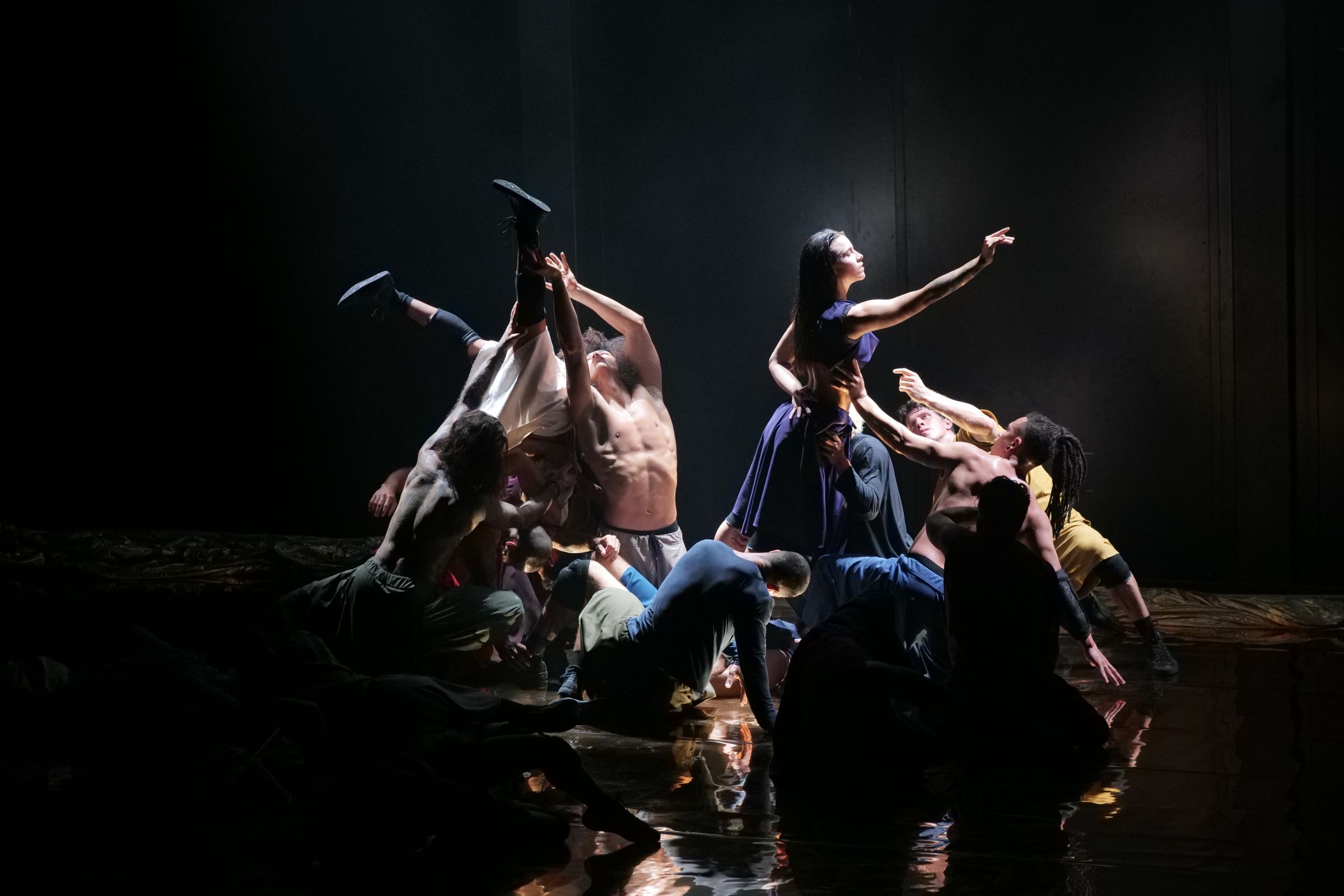
Music and resistance
Festival Arabesque does not stop at traditions. Its stakes are higher and it depends on a story that neither ends nor begins, but only undergoes successive incarnations. The story of Hamed Ben Amor, a rapper born in 1989 follows the impetus of the gnawa tradition.
He enters adulthood in 2007. He has plans for the future and all the troubles typical of teenagers on the threshold of adulthood. He dreams of a musical career, but in the meantime he is couchsurfing in the Tunisian equivalent of Egypt’s ahw, the hookah smoking room. He does not yet know that in three years’ time his life – and that of the whole country – will have changed irrevocably. He does not yet know that in three years’ time he will record a song that will become the anthem of the Jasmine Revolution. The same one that dragged Tunisian policemen out of their beds in the middle of the night, the same one during which, in 2010/11, hundreds of thousands of citizens took to the streets to protest against the bad situation in the country and, above all, against the rule of President Zine Al-Abidine Ben Ali.
Zin Al-Abidin Ben Ali has ruled the state for less than a quarter of a century.
‘In the eyes of the West, it’s a long time,’ says Egyptian comedian, Youssef Bassam, ‘for us in the Arab world, it’s a short first term.
Under his rule, frustration, helplessness and anger grow. A revolution is needed, but before that: a symbol is needed to capture hearts.
Mohamed Bouazizi is twenty-six years old and earns his money by running a small fruit stall in the city market. He supports his entire family: his mother, who was widowed when the boy was three, his five siblings. If he has fruit or vegetables left over, he shares them with the poor. Bouazizi is a well-known person around the whole of Sidi Bouzid. He likes steaks and fries and supports the Esperance Sportive team. He is becoming a martyr and his story is the last straw that breaks the camel’s back.
There is also a story in it about the oppression of the system.
Here is a tired, young man who uses all his strength every day to be able to stay afloat. Since childhood, he has suffered humiliation at the hands of the police. He saves and is hard-working, until one day it seems as if the sun has come out from behind heavy clouds. Bouazizi manages to save enough to be able to take out a loan for a purchase that will allow him to expand his stall. On the same day, the police visit him, they want to know everything: where did his shiny new scales come from? Is he not hiding anything? Where does he get the money from? They confiscate the scales and search the stall, Bouazizi gets into a discussion with an elderly policewoman, she – so the story goes – punches him in the face.
In the perspective of patriarchal culture, a blow delivered by a woman is the ultimate humiliation for a man. There is nothing worse. Bouazizi tries to pick himself up, but he is agitated, anger floods his eyes, images combine in increasingly illogical sequences. Bouazizi seeks help from local politicians and goes to the mayor’s office. He asks for help and does not receive it. No one pays any attention to him, so he shouts: if you don’t see me, I will set myself on fire.
He pours a canister of petrol over himself and runs out onto the stairs of the building.
His funeral will be attended by thousands of people.
This story is not just about the system. It is a story of the extreme fatigue felt by an enslaved society. Gestures and incidents take on a different significance. A weary man follows his anger. Despair takes him onto the streets, he cuts his throat.
Months later, the Bouazizi story will gain further chapters. British journalist Elizabeth Day travels to Tunisia to cover the aftermath of Bouazizi’s death in an article for The Guardian: His likeness is everywhere. His face even advertises menus in restaurants. His family received compensation from the former president. They are the object of envy of their neighbours. They turn their noses up: thanks to her son’s death, his mother has acquired a new house where she keeps a caged canary and a computer.
New interpretations of old events are emerging.
Bouazizi is a symbol to whom anything can be attributed. He represents the young. One of the students who ran a stall in the face of the fact that he couldn’t find a job for a long time after university – just like thirty per cent of Moroccans. No one cares that Bouazizi had never actually been to university.
The policewoman who allegedly hit him goes to prison and is acquitted. Witnesses do not confirm the version that she was supposed to have hit someone. The suspect becomes the second victim of injustice. Time in prison has sped up: the forty-six-year-old woman appears to be much older. Doubts grow, facts crowd out hurried anecdotes or testimonies. Maybe he didn’t mean to set himself on fire at all, maybe he poured a flammable liquid on himself and then lit a cigarette? No one knows for sure anymore. The man was desperate, it all happened so quickly. It was said that he had spent almost a month in hospital before he died, but those who saw him – or claimed to have seen him – with their own eyes believed that this could not have been true. The body was almost black, the legs blended into one. Keeping it alive would have been difficult. Maybe even impossible. The idea, people believed, was that the president could be photographed going to the hospital, full of pain, to talk to the victim.
This will be one of his last presidential pilgrimages – less than a month after his death – or: as some want: following the news of Bouazizi’s death, Zin Al-Abidin Ben Ali flees to Saudi Arabia, where he is sentenced in absentia and where he lives to see his end.
The revolution that will sweep through Morocco after Bouazizi’s death will be called a Jasmine Revolution, in line with the idea that such social speeches are defined by the colours of flowers.
The name that will be more widely adopted in Tunisia, however, will be that of the Revolution of Dignity, because it is above all dignity that the people of the country are fighting for.
Less than a month before the Sidi Bouzid incident, Ben Amor uploads a video of himself rapping his new song to the internet. The video is simple, taken with a phone. The author does not show his face, hiding it under the brim of his baseball cap. Within weeks, Rais Lebled’s song will be on everyone’s lips. It will be rocking the cars on the streets of Rabat and reverberating between the news on Al-Jazeera.
In his words, the tired people of the country find themselves. They repeat after him:
Mr President, your people are dead
So many of them have to eat from the rubbish
This is what is happening in this country
Poverty is everywhere and there is nowhere to lay your head
I speak for all those cheated and all those crushed
Rais Lebled is becoming the official anthem not only of the Tunisian revolution, but of the entire social ferment that will sweep the Arab world in 2011.
This is not the only story of how the two driving forces of music and resistance sail through the waters of politics in one dugout.
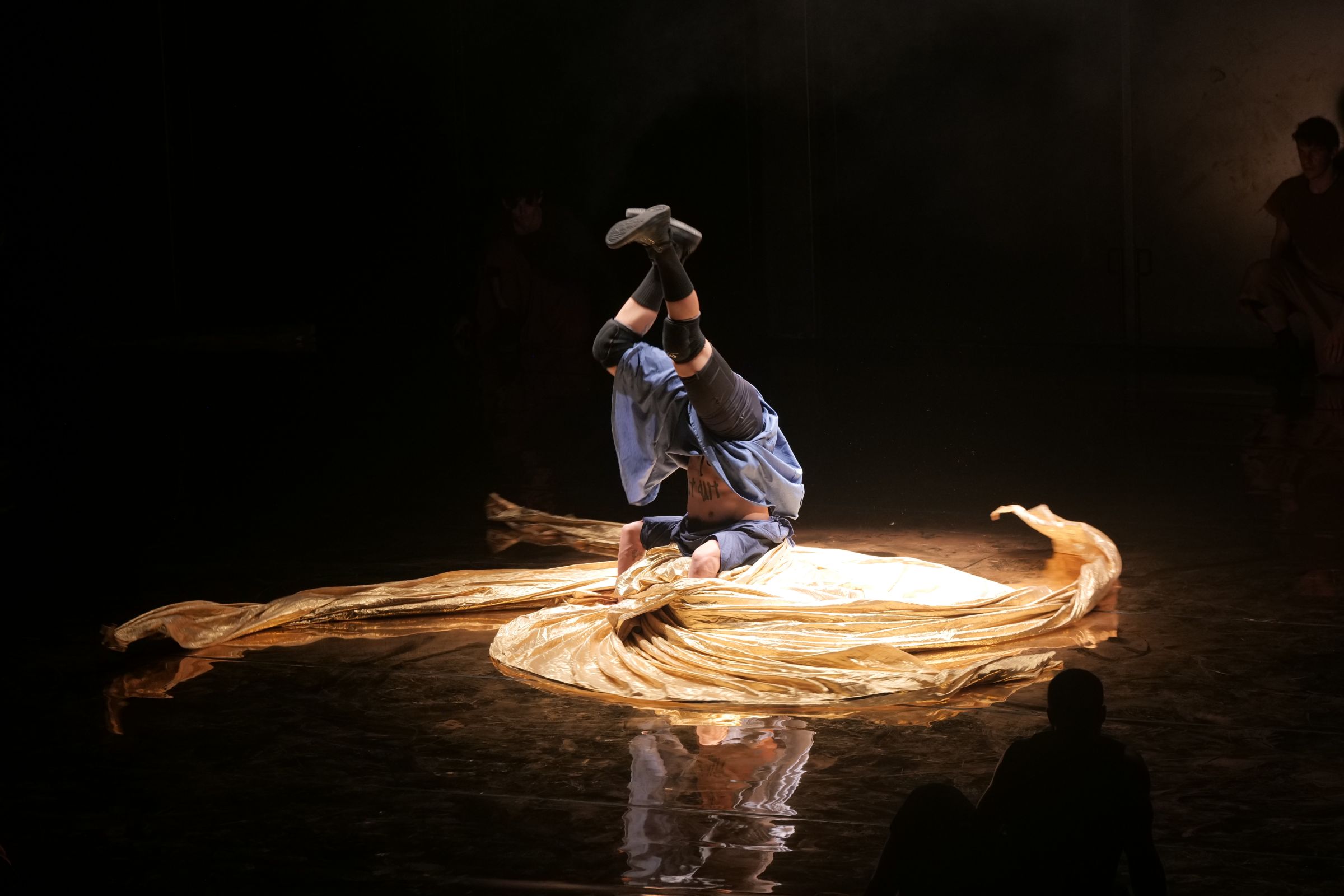
Aita and the blues
Safi is a Moroccan port town in the region known as Dukkala-Abda. In its potteries, the tamarisk wood-fired kilns do not stop for a moment. They bake what Safi is famous for: ceramics and tiles.
A girl was born not far from this place. Her parents called her Harda al-Ghaita, but people recognise her by the nickname Kharboucha. It is difficult to clearly discern where this term comes from or what exactly – and in which dialect – it is supposed to mean. According to some traditions, the nickname originated from the scars the girl had on her face. According to another, this is the name given to respected women in society, matrons we would say. Not only do they watch over the order of things, but they also contribute artistically, twirling at weddings and adding splendour to family celebrations with their singing. They are respected women and free with the kind of freedom that the state of widowhood gives them. A woman without a husband becomes once again a separate and independent member of society, unfettered by the duties ascribed to women whose rhythm of life and day is determined by the affairs of the family and the walls of the home.
Little is known for sure about Kharboucha today.
One of the most important stories that weave around her life is that of her conflict with a certain ben Omar, a magnate who ruled the region at the behest of the Sultan. In one of the few photos available, he is sitting cross-legged. He is dressed in black, his hands clasped together, his eyes seemingly closed. The caption to the photo states that he was famous for his brutality and cruelty. He poses, sitting on a bedspread white with roses and tiny flowers. He is the one responsible for the slaughter of the Oulad-Zeid tribe, from which Kharboucha hails. He is responsible for the confiscation of entire estates.
Kharboucha sings her rebellion against the cruelty of power, she is not afraid, she performs in public, and the news of her talent – as it happens in fairy tales – must sooner or later reach the palace of those in power. According to the legend, ben Omar organises a feast. He wants her to come. He asks her to sing.
Kharboucha sings a song about a man with grey hair, a despicable betrayal of an entire tribe. They both come from the same place, how was the slaughter of brothers and relatives possible?
Some will say she died after being locked in her own home and set on fire.
Others that her tongue was cut out.
What is left behind is the tradition of aita, literally translated as song-lament.
Among the few surviving recordings and song lyrics are stories of women’s hard lives, of living under social pressure, of living reduced to what is within the walls of the home, of living in subordination to men. She describes colonialism, how it has deformed and coarsened Morocco. Finally, she sings about a sense of freedom and the need for political and civil rights.
The aita tradition is returning to the Festival Arabesque in various incarnations.
It is spoken of by a succession of artists who present their work in the discussions and panels that follow. For what is aita nowadays? A cry that incites revolution and an act of expression that helps to resist the oppression of the system. A story similar to the one attributed to the emotional tradition of the blues, according to which it is not the sequences of melody or rhythm that define the genre, but the assumption that we are dealing with the blues whenever a good person sings about how difficult and unfair life is.
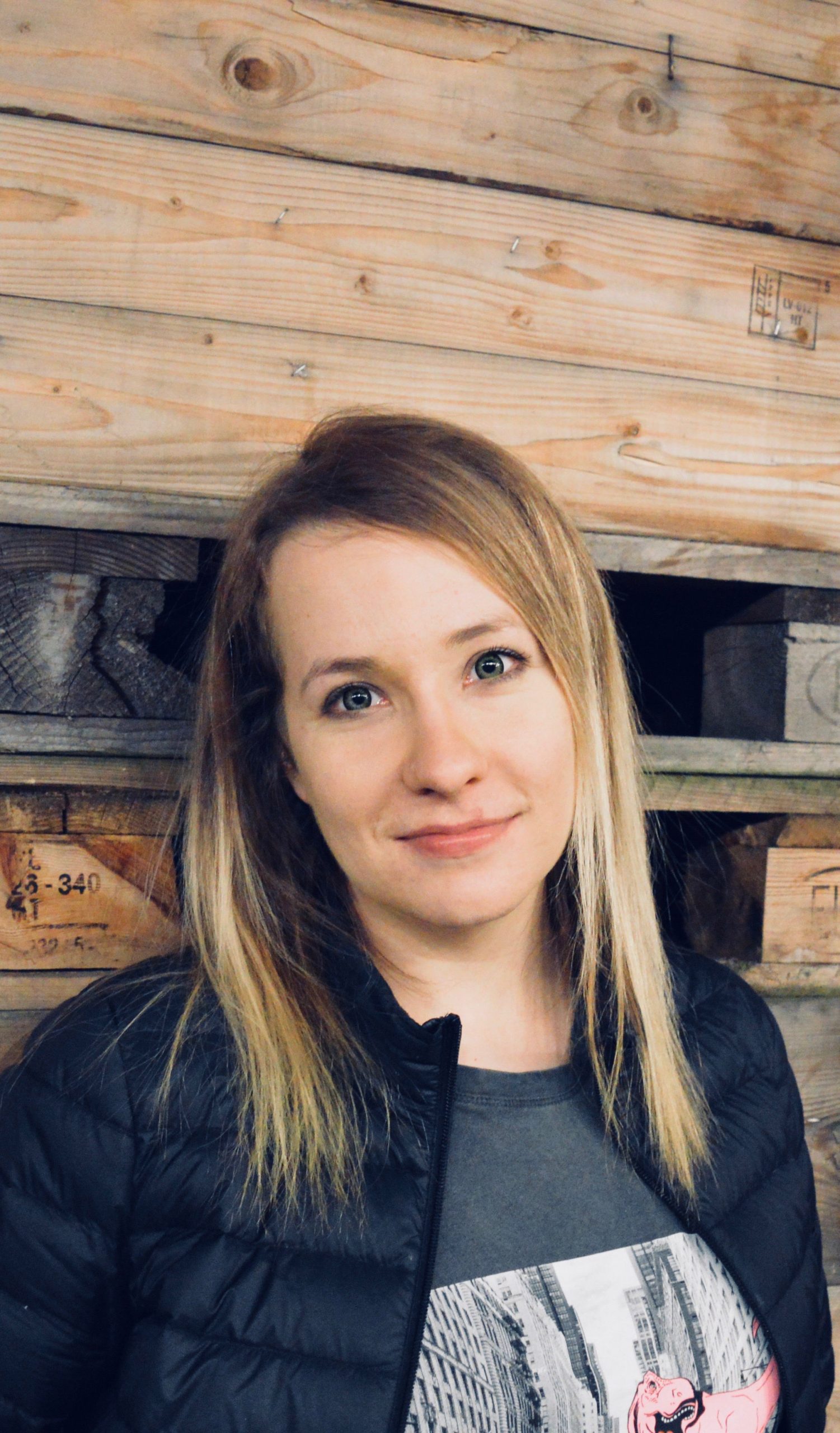
Weronika Murek
(born 1989) – writer, playwright and columnist. She graduated from the Faculty of Law and Administration of the University of Silesia, Faculdad de Derecho of the Universidad de Barcelona as well as the Creative Writing (SLA) postgraduate course at the Jagiellonian University.
She is the author of a collection of short stories Uprawa roślin południowych metodą Miczurina (Czarne Publishing House 2015) which was nominated for the Polityka Passports, the Gdynia Literary Award for prose and the Conrad Award. The collection reached the final stage of the Nike Award and won the Witold Gombrowicz Award for the best book debut. It has been translated into French, Hungarian, Slovak and Serbian and the Norwegian translation is in progress. One of her stories was adapted to a short film Maria nie żyje/Maria is dead’ and a feature film Przejście/Passage (directed by D. Lamparska) that reached the final of the Golden Lions competition of the Gdynia Film Festival.
In 2015, she received the Gdynia Literary Award for her drama Feinweinblein (translated into English, French, Georgian and Romanian) and the award for the best debut in the Staging of Contemporary Art Competition for Sztuka Mięsa (staged by the Silesian Theatre in Katowice and directed by R. Talarczyk). In 2017, a TV theatre play based on Feinweinblein was also produced in the Teatroteka series (directed by M. Bednarkiewicz).
In 2019, her collection of plays with the same title was published (Czarne Publishing House). Since 2015, she has worked with Polish theatres, including the Studio Theatre, the New Theatre in Warsaw, the TR Warszawa, the Powszechny Theatre in Warsaw, the Słowacki Theatre in Kraków, the Jewish Theatre in Warsaw, the W. Siemaszkowa Theatre in Rzeszów, the H. Modrzejewska Theatre in Legnica and the Contemporary Theatre in Szczecin. She is a regular contributor to Dwumiesięcznik, the monthly magazine Pismo and the bi-monthly Książki. Magazyn do czytania.
